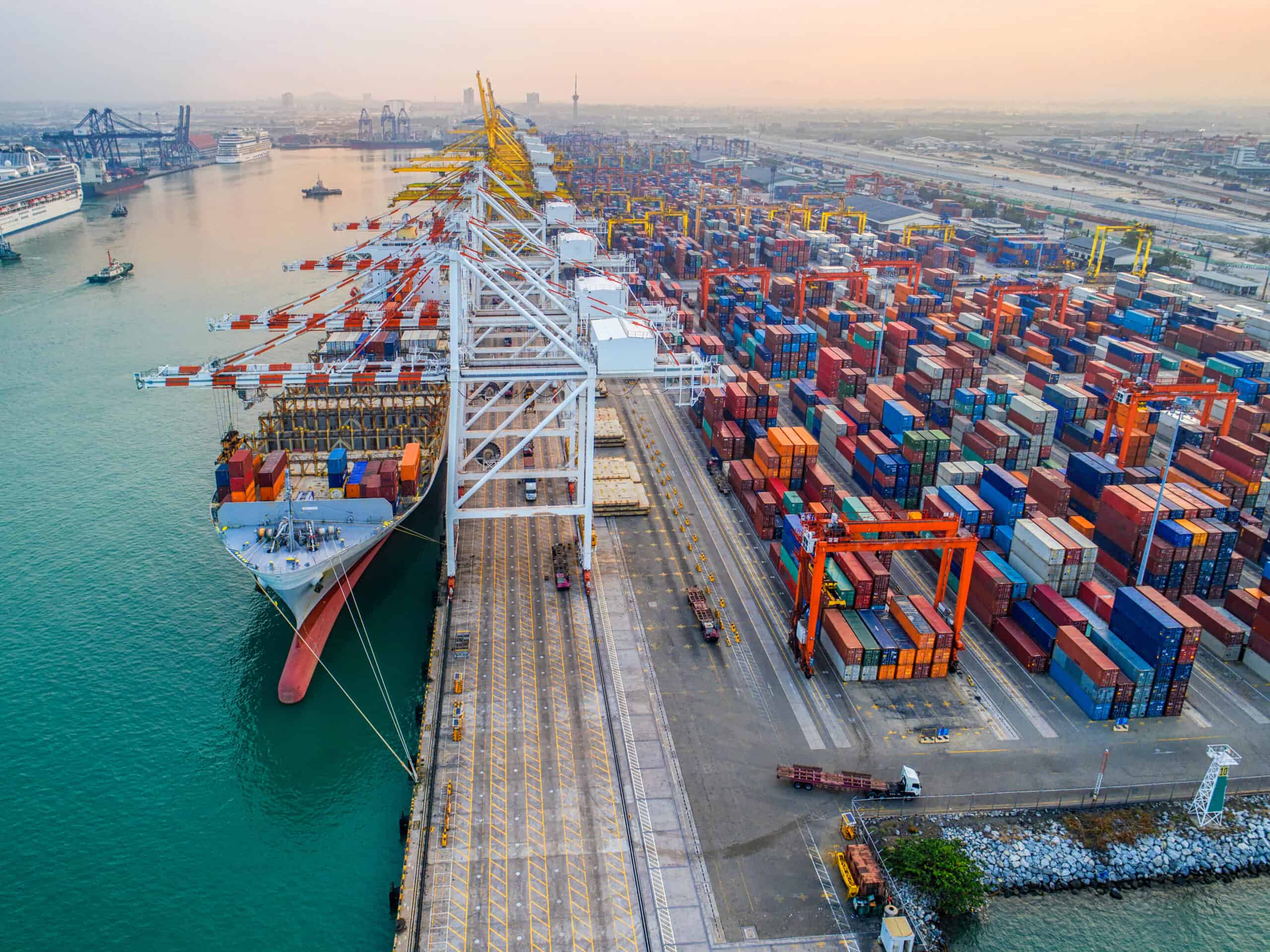Whether you’re a seasoned ecommerce veteran or a newcomer to the world of online selling, understanding the ins and outs of shipping manifests is crucial to the smooth and efficient operation of your business.
In this comprehensive guide, we’ll explore the purpose of shipping manifests, and review the key differences between shipping manifests and other essential shipping documents like bills of lading.
TL;DR:
Key takeaways

A shipping manifest is a comprehensive legal document listing all cargo being transported, required for customs clearance and logistics management.

Key elements include shipment contents, shipper/receiver details, origin/destination information, and special handling requirements.

Common types include cargo manifests, freight manifests, import general manifests, and specialized manifests for dangerous goods or temperature-sensitive items.

Unlike bills of lading (contracts between shipper and carrier for individual shipments), shipping manifests provide a comprehensive overview of all cargo on a vessel.
What is a shipping manifest?
A shipping manifest is a detailed document that serves as a comprehensive list of a ship’s cargo, providing a detailed account of the goods being transported. It’s a legal document required for the transportation of goods, ensuring all parties involved have access to critical information about the shipment.
There are several key elements required for every shipping manifest:
01
Comprehensive list of shipment contents
An accurate and up-to-date list of every item being transported. This list will be used by customs officials, carriers, and receivers to verify the shipment’s contents.
02
Shipper and receiver details
The names and contact information of both the shipper (consignor) and the receiver (consignee). This information allows all parties to be contacted if issues arise during transportation.
03
Origin and destination
The shipment’s origin and destination port to help carriers plan efficient routes and tracking shipments along the way.
04
Special handling requirements
Any special handling needs, such as temperature control or fragile handling, to guarantee products are transported safely throughout the shipping process.

Why are shipping manifests important?
01
A shipping manifest is crucial for facilitating international shipping, ensuring compliance with regulations, and streamlining logistics processes for delivery instructions.
Key Takeaway: During customs clearance, officials rely on manifest documents to verify declared cargo matches the actual shipment, assess duties and taxes, and prevent the import of illegal or restricted goods. A detailed manifest streamlines the customs clearance process and helps avoid delays or penalties.
Carriers also use shipping manifest information to plan and manage resources effectively, ensuring they have the necessary equipment and personnel to handle the shipment. This improves supply chain efficiency and reduces costs.
Shipping manifests help prevent delivery errors by providing accurate information about the shipment contents and consignee, and helping make sure customers receive their orders on time.
NOTE: In case of loss or damage during transportation, a shipping manifest serves as essential evidence for insurance claims. The detailed record of shipment contents and value supports claims and minimizes financial losses.
A shipping manifest can also provide a clear record of the movement of goods from origin to destination, enabling all parties to track the shipment’s progress and identify issues or delays. This increases visibility, builds trust between trading partners, and enhances supply chain efficiency.

Types of shipping manifests
02
There are several types of shipping manifests, each serving a specific purpose in the transportation process. Understanding the differences between them is crucial for keeping the transportation of goods smooth and efficient.
01
Cargo manifest
Cargo manifests are the most common type, providing a detailed account of all goods shipped on a container or cargo ship. It includes essential information such as item descriptions, their quantity, and their value. Cargo manifests track and manage the shipment, making sure all parties have a clear understanding of what is being transported.
02
Freight manifest
Similar to a cargo manifest, a freight manifest includes additional information about freight charges and transportation details. It is particularly useful for businesses that need to keep track of shipping costs.
03
Import general manifest
An important general manifest (IGM) is submitted electronically to customs before a vessel’s arrival. It details the vessel’s cargo and voyage information and is essential for proper declaration of goods, payment of necessary duties and taxes, facilitating smooth customs clearance, and preventing delays in the transportation process.
04
Container manifest
For shipments involving multiple containers, a container manifest lists the contents of each individual container on board a vessel. It helps track and manage the shipment at a more granular level, making sure the right containers have the correct cargo loaded into them. This is particularly useful for large shipments with complex logistics processes.
05
Dangerous cargo manifest
When shipping hazardous materials, a dangerous cargo manifest is essential. It provides detailed information about the hazardous materials being transported, including their classification, quantity, and packaging. This manifest is critical for ensuring safe handling and compliance with relevant regulations, helping to prevent accidents, and minimizing potential risks when transporting hazardous materials.
06
Out of gauge manifest
For oversized cargo exceeding standard container dimensions, an out-of-gauge manifest (OOG) is used. This type of shipping manifest specifies the handling and stowage requirements for non-standard goods. The OOG manifest helps plan the loading and unloading process, minimizing the risk of damage to the cargo and the vessel.
07
Reefer manifest
A reefer manifest is used for shipping temperature-sensitive goods in refrigerated containers, also known as “reefers.” Reefer manifests detail the temperature settings and monitoring instructions for the goods. The reefer manifest helps maintain the quality and integrity of the goods, minimizing the risk of spoilage and financial losses.
Shipping manifest vs. bill of lading
03
Bills of lading and shipping manifests are both essential documents in the transportation process, but they serve distinct purposes and contain different types of information.
Bill of lading
A bill of lading is a legal document that functions as a contract of carriage between the shipper and the carrier when transporting goods. It acknowledges the receipt of goods by the carrier and outlines the specific terms and conditions under which the goods will be transported. The bill of lading provides evidence of the contract of carriage, serves as proof of receipt of the goods by the carrier, and shows title to the goods.
Upon successful delivery of goods, the carrier will transfer ownership of the shipment to the receiver. If there is an issue with the shipment, the receiver can refuse delivery. Conversely, if the recipient has not paid for the shipment, the carrier can withhold the delivery until the payment is received.
The bill of lading includes details such as description of the goods, quantity, consignor and consignee, port of loading and discharge, cargo handling instructions, and freight charges and terms of payment. In the event of any disputes or legal issues arising during the transportation process, the bill of lading serves as a crucial piece of evidence.

Shipping manifest
PRO TIP: A shipping manifest is a comprehensive list of all cargo on board a vessel, providing a detailed overview of the ship’s contents. The primary purpose is to facilitate customs clearance and assist in the operational aspects of the shipping process, including cargo descriptions, quantities, consignor/consignee details, ports, and special handling requirements.
When exporting goods, customs authorities use the shipping manifest to verify the declared cargo against the actual shipment, assess duties and taxes, and identify any prohibited or restricted items. The shipping manifest also helps port authorities and terminal operators plan for the efficient unloading and handling of the goods transported.
Key Takeaway: While a bill of lading is typically issued for each individual shipment, a shipping manifest covers all the cargo on a particular vessel, regardless of the number of shippers or consignees involved. The shipping manifest provides a comprehensive view of the ship’s cargo, enabling better real-time visibility, coordination, and communication among the various parties involved.

Shipping manifest support
04
Building a comprehensive shipping manifest for each shipment is crucial for ecommerce businesses aiming to streamline operations and deliver exceptional customer experiences. Understanding the purpose, types, and key differences between a shipping manifest vs. a bill of lading helps businesses comply with regulations, minimize delays, and efficiently manage their shipping operations.
As your business grows and evolves, partnering with a reliable and experienced third-party logistics (3PL) provider like Red Stag Fulfillment can make it easier to meet customs requirements and simplify the international shipping processes.
Our expertise in shipping and fulfillment allows us to optimize your shipping manifests, navigate complex regulations, and deliver your products to customers with speed and accuracy.
Get in touch to learn how we can help. your business manage the intricacies of shipping and fulfillment.
Frequently asked questions
What is the difference between a shipping manifest and packing list?
A shipping manifest is a comprehensive document listing all cargo on a vessel for customs and operational purposes, while a packing list is a detailed inventory of contents in a specific package or shipment meant for the recipient. The manifest is broader in scope and used by carriers and authorities, while the packing list is package-specific and helps the receiver verify their order contents.
Who prepares the shipping manifest?
The shipping manifest is typically prepared by the freight forwarder or shipping agent working on behalf of the exporter. For large vessels, the shipping line or carrier may compile the master manifest by combining information from all shippers. In some cases, especially for small businesses, the exporter might prepare their own manifest documents with the guidance of their logistics partner or 3PL service provider.
How long should shipping manifests be kept?
Most shipping authorities recommend retaining shipping manifests for at least 5-7 years, though requirements vary by country. In the United States, the Customs and Border Protection (CBP) requires manifests to be kept for 5 years, while some countries extend this requirement to 7 or even 10 years. For ecommerce businesses, it’s prudent to maintain digital copies of all shipping documentation for at least 7 years to comply with various international regulations and to have records available for potential audits or disputes.









